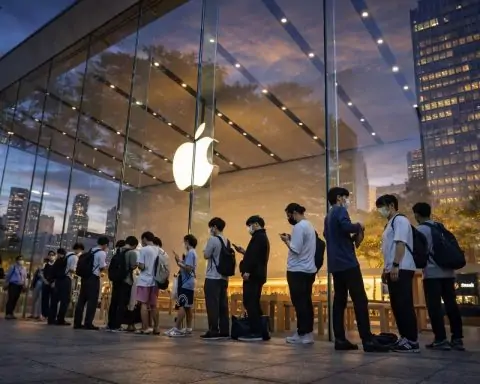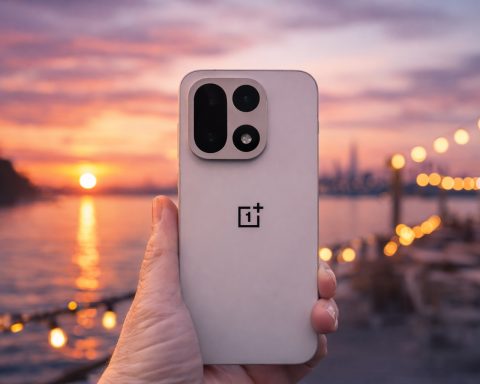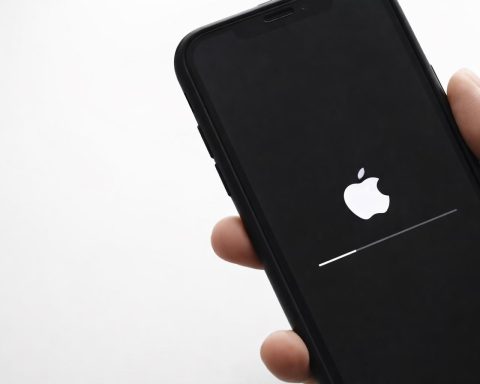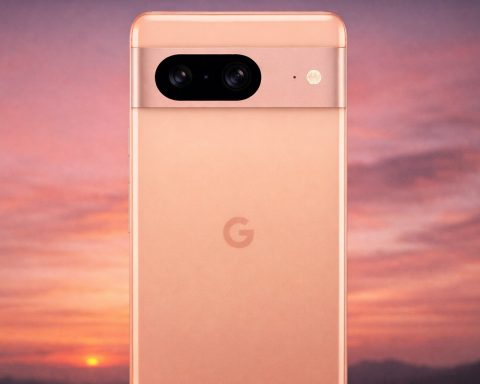Key Facts
- Legacy Networks Sunsetting: Governments and operators worldwide are accelerating the shutdown of 2G and 3G networks to free spectrum for 4G and 5G. The GSMA reports 169 networks in 75 countries have already sunset 2G/3G as of 2024 [1]. In Sub-Saharan Africa, 3G still dominates and only South Africa has firm plans to retire both 2G and 3G (by 2027) [2].
- New 4G Deployments:Namibia just saw its first privately-run mobile network launch, built entirely on 4G LTE [3]. Paratus Group’s $81 million investment aims to challenge state carriers and cater to tech-savvy users [4]. Neighboring South Africa’s intent to shut 2G/3G by 2027 underscores the region’s shift toward 4G/5G despite digital divide concerns [5].
- Asia Transitions: The Philippines announced plans to phase out all 2G and 3G services, reallocating those bands to improve 4G/5G coverage [6] [7]. Only ~15% of Filipino mobile users remain on 2G/3G, and major telcos (e.g. Smart Communications) have begun shutting legacy networks in favor of faster technologies [8] [9]. Other Asia-Pacific markets are also adjusting timelines – for example, New Zealand’s Spark delayed its 3G shutdown to 2026 while aligning 2G turn-off by 2025 to ease customer migration [10] [11].
- Emerging Market Challenges: In Nigeria, embattled carrier 9mobile (rebranded T2) struck a national roaming deal with market leader MTN to mitigate its failing infrastructure [12] [13]. T2 customers can now latch onto MTN’s 2G/3G/4G signal nationwide, but many users report difficulty accessing service without manual network selection [14]. Consumer advocates criticized T2’s lack of customer education on the roaming setup, urging better outreach so the operator “roar[s] back to life” and remains a viable competitor [15]. Notably, the MTN deal has spurred a turnaround – T2 added ~290,000 subscribers in July, its first growth in nearly a year [16].
- Spectrum & Policy Moves:Mexico highlights how policy affects GSM services – the government’s high spectrum fees have led AT&T to likely skip Mexico’s next spectrum auction [17] [18]. With América Móvil’s Telcel dominating ~70% of the market, costly licenses have already driven Telefónica’s Movistar to exit (returning its spectrum and piggybacking on AT&T’s network) [19] [20]. U.S. officials are pressuring Mexico to lower fees, warning that steep costs stifle competition and investment in mobile internet services [21].
- Tech Upgrades & Compatibility: Carriers are adopting new technologies to improve GSM-based services and device support. In China, the three major operators announced they will support eSIM (embedded SIM) on Apple’s upcoming iPhone “Air,” a move towards modernizing SIM technology and simplifying device connectivity [22]. Meanwhile, operators in the U.S. and Europe continue to encourage customers off legacy networks – for instance, T-Mobile US began phasing out its 2G GSM network in 2025 and even offers free 4G handset upgrades to 2G holdouts to ensure no one is left disconnected [23] [24]. Virgin Media O2 in the UK similarly warned businesses to replace any 2G/3G devices before those networks shut down at year’s end, as all UK 3G networks will be offline by Dec 2025 [25].
Legacy Networks on the Way Out
Around the globe, 2G and 3G networks – the original GSM-based systems – are being switched off at an unprecedented pace. Telecom regulators and operators are prioritizing 4G and 5G, citing the need to reuse spectrum and reduce maintenance costs on legacy infrastructure [26]. The GSMA’s latest “State of Mobile Internet Connectivity” report highlighted that by end-2024, 169 operators in 75 countries had completed a 2G or 3G shutdown, and many more are in progress [27]. As older networks carry dwindling traffic and impose a financial burden, “many operators have either shut down or are in the process of sunsetting 2G and 3G networks,” the GSMA noted [28]. However, this trend is uneven across regions – the GSMA observes that in parts of Sub-Saharan Africa, 3G remains the dominant mobile technology, and only one country there (South Africa) has concrete plans to retire 2G/3G entirely [29]. This disparity underscores how developing markets must balance progress with accessibility: as one industry analyst warned, completely switching off legacy networks too fast “could exacerbate the digital divide” if low-income users can’t afford 4G/5G devices [30].
National policies are evolving to manage this transition. In the United Kingdom, all major carriers have already or will shut down 3G by the end of 2025, in line with a government-backed plan (2G networks will follow by 2033) [31]. Vodafone, EE, and Three UK have completed their 3G switch-offs ahead of schedule, and Virgin Media O2 began its shutdown in 2025, urging any remaining corporate clients on 3G or 2G IoT devices to upgrade now [32] [33]. “Ensuring your devices are 4G/5G compatible… [is] the only way to avoid disruptions when 2G/3G services are switched off,” explained Virgin Media O2 executive Paul O’Sullivan in a briefing, stressing that businesses must act or risk critical equipment going dark [34].
In the Asia-Pacific, several countries are actively phasing out legacy networks as well. Singapore became one of the first in its region to end 2G services a few years ago, and its carriers just fully terminated 3G this past July 2025 [35]. New Zealand’s operators had planned to retire 3G by end-2025, but in June Spark NZ announced a brief extension to March 2026 to give remaining customers more time – alongside an accelerated push to upgrade all its 3G-only cell sites to 4G/5G by then [36] [37]. Rival One New Zealand (formerly Vodafone NZ) similarly postponed its 3G shutdown to coincide with 2G’s end in 2025, aligning both at once for a smoother transition [38]. These cases show regulators granting short grace periods to avoid stranding users.
Perhaps the most dramatic shift is underway in the Philippines, where authorities have decided to completely retire 2G and 3G networks in the coming years. The Department of Information and Communications Technology (DICT) revealed that only ~15% of Philippine mobile subscribers still use 2G/3G, and maintaining those aging networks is now seen as an impediment to digital progress [39] [40]. Once new legislation (the Konektadong Pinoy Act) is signed into law, the spectrum currently occupied by 2G and 3G will be reassigned to boost 4G and 5G coverage [41]. “Keeping these outdated systems could slow down digital progress as demand for faster, more reliable internet increases,” noted the DICT, emphasizing that higher-speed networks must take priority [42]. Major Filipino operators appear on board – Smart Communications has already begun shutting down 2G/3G sites to reallocate resources to 4G/LTE and align with global trends [43]. Third player DITO Telecommunity also publicly backed the phase-out as a “safer, more modern mobile environment”, indicating it will help its remaining 2G/3G customers transition rather than resist the change (Globe Telecom, the second-largest, had mostly migrated its base to 4G earlier as well) [44]. The Philippine plan illustrates a broader theme in emerging markets: a push for “leapfrog” upgrades to newer networks, but with a wary eye on those who still rely on basic services. Officials there acknowledge that completely saying goodbye to 2G/3G will require programs to ensure affordable 4G devices and coverage even in rural areas, so that no community is left behind when the old signals go silent.
4G LTE Expansion and Upgrades Accelerate
Even as older generations fade, 4G LTE remains the workhorse of global mobile internet and continues to expand in coverage. A new GSMA study confirmed that 4G now reaches about 93% of the world’s population (7.6 billion people), making it the most pervasive network technology on the planet [45] [46]. In fact, 2024 saw nearly 150 million more people gain 4G coverage for the first time, extending LTE service into the last unconnected corners [47]. However, the GSMA also noted that the rate of new 4G deployments is slowing down compared to a few years ago, as many operators have already covered the areas that promise the highest returns [48]. The focus – and the bulk of investment – is shifting toward 5G in advanced markets [49]. But in developing regions, 4G still has plenty of room to grow and is often the primary upgrade path for 2G/3G communities.
One headline example this week comes from Namibia in southern Africa, where Paratus Group launched the country’s first privately-owned mobile network to shake up a long-static telecom market. Until now, Namibia’s mobile services have been dominated by two state-backed operators (MTC and Telecom Namibia) since the 1990s [50] [51]. Paratus – a pan-African telecom company operating in 15 countries – invested roughly N$1.42 billion (~US$81 million) to deploy a brand-new network built entirely on 4G LTE technology [52] [53]. “Launching Namibia’s first private mobile network is a deliberate step in our mission to transform Africa’s digital landscape,” said Paratus CEO Schalk Erasmus, underscoring the bold intent to provide quicker, more modern connectivity options [54]. By skipping over 2G and 3G, Paratus aims to deliver faster internet and “convenient mobile solutions” to a tech-savvy demographic hungry for better service [55]. The launch could be a game-changer for Namibia’s ~3 million people, where mobile data demand is rising. It also aligns with regional trends: South Africa’s plan to retire 2G/3G by 2027 (to refarm spectrum for 4G/5G) was explicitly cited as context [56]. However, Paratus and regulators must ensure no users are stranded: critics of South Africa’s 2027 shutdown warn it could leave behind those who can’t afford 4G devices [57]. Namibia will need to watch that balance as it upgrades. Still, the Paratus 4G rollout is broadly seen as positive – bringing competition and capacity. It’s expected to “bite into the market” of the state operators (MTC has 2+ million subscribers) by offering modern coverage and plans tailored to today’s users [58] [59].
Other regions are also doubling down on LTE expansion. In South Asia, India’s government-owned telco BSNL has been aggressively installing 4G towers this year after long delays. By mid-2025 BSNL had deployed over 100,000 new 4G base stations across India, using indigenously developed equipment [60] [61]. This massive rollout (largely completed by the summer) finally brings 4G to many rural and semi-urban parts of India that lacked high-speed data. The company’s next phase is to upgrade these sites to be 5G-ready, but officials have made clear that 5G launch will only come once a robust 4G layer is in place nationwide [62]. BSNL’s aim is to catch up with private rivals (Jio and Airtel) and ensure even the remotest areas have reliable mobile internet. The impact is already visible: by September, India’s 4G population coverage had climbed significantly, and early tests of BSNL’s network show improved speeds.
In Nigeria, despite the 5G hype, it’s actually 4G that just hit a milestone – reaching over half the population (50.8% coverage) for the first time [63] [64]. Fresh data from the Nigerian regulator (NCC) shows 4G now leads in coverage there, whereas the older GSM networks are receding: 2G signals cover about 38% of Nigerians and 3G only ~7% now, while nascent 5G is at 3% coverage [65] [66]. This marks a rapid transition in a country that just a few years ago relied heavily on 2G/3G for basic connectivity. The expansion of 4G in Nigeria is thanks to operators like MTN, Airtel, and Glo investing in network upgrades and rollout of low-band LTE across rural areas. It also explains why Nigerian telcos – like many in Africa – are increasingly ready to consider turning off older networks in the coming years; as one telecom observer put it, maintaining 2G/3G with so few users is becoming “hard to justify” when 4G can handle voice (VoLTE), data, and IoT more efficiently [67] [68]. Still, companies must tread carefully in markets like these, since tens of millions of people continue to use basic phones. The GSMA report noted the “speed of sunsetting differs by region”, and in lower-income areas, 2G may hang on a bit longer until affordable 4G handsets and digital literacy improve [69].
Carrier Moves and Partnerships in a Changing Market
Telecom operators are responding to these technological shifts with strategic partnerships and customer outreach to stay competitive. A clear case unfolded in Nigeria, where the country’s fourth-largest mobile operator underwent a major turnaround effort this summer. 9mobile – a once-promising GSM operator that fell on hard times – was acquired by new investors and rebranded as “T2” in July. Facing years of subscriber losses and deteriorating service (partly due to aging 2G/3G equipment), T2 made a bold move: it entered a nationwide roaming and infrastructure-sharing deal with MTN Nigeria, the market leader [70] [71]. Effective July 3, 2025, this deal allows T2’s customers to automatically connect to MTN’s network anywhere MTN has coverage, essentially filling in all the gaps where T2’s own network struggled [72] [73]. In practice, T2 users with a roaming-enabled SIM can receive signal (for voice, SMS, data) via MTN’s cells on 2G, 3G or 4G as needed [74]. The arrangement was approved by regulators to bolster competition – Nigeria’s telecom authority wanted to save the ailing 9mobile brand from collapse and keep a 4th player in the market.
Initial reaction from T2’s long-suffering subscribers was joyful; many had kept their old 0809… numbers out of loyalty even as service quality nosedived [75]. “When the announcement was made…I was elated because 9mobile (now T2) used to be my favorite,” one customer recounted, noting he hoped to “enjoy my darling line again” thanks to MTN’s coverage [76]. However, by early September (over two months into the partnership), frustration arose as some users still couldn’t get their T2 SIMs to work reliably on MTN’s network [77]. Complaints flooded social media and consumer groups that the roaming wasn’t “automatic” for everyone – many customers didn’t realize they needed to tweak phone settings (selecting MTN manually, disabling auto-network selection, then rebooting) to force the roaming connection [78]. A Nigerian consumer rights association (ATCIS) even reported dozens of complaints from T2 users who hadn’t been properly guided through this process [79]. “T2 didn’t do enough education for its customers,” observed ATCIS President Sina Bilesanmi, suggesting the company should have sent mass SMS and voice prompts in local languages explaining how to latch onto MTN’s signal [80]. “It is their network – they should…educat[e] them on the steps to take to enjoy the roaming deal,” he said, emphasizing that keeping those subscribers happy is key to “deepening competition” in the industry [81] [82].
T2’s management has since responded that they are rolling out an awareness campaign and that the roaming is working wherever MTN has 4G/3G/2G, but admitted users must sometimes select it manually. Despite the hiccups, there are early signs the strategy is working: T2 recorded a subscriber net gain in July 2025 – its first in nearly a year [83]. It added about 290,000 new customers that month, thanks largely to positive word-of-mouth that you can now use a T2 line with MTN’s nationwide coverage [84] [85]. In fact, in July T2 was the only Nigerian operator to grow; the three bigger rivals all lost subscribers (Airtel notably shed over 2 million) [86] [87]. While T2 still holds just a small market share (~1.6% of active SIMs) [88] [89], the roaming pact gives it a fighting chance to win back users who left due to coverage issues. An industry analyst in Lagos noted this kind of active infrastructure sharing could become more common to utilize networks efficiently. For consumers, the immediate benefit is greater coverage choice: a once-struggling GSM provider can now leverage a top-tier network. As one stakeholder put it, the Nigerian mobile arena “is like a big elephant with enough meat for all” – with smart partnerships and customer-centric approaches, even smaller operators can survive and carve out a niche [90].
In other markets, carriers are likewise finding creative paths to modernize without alienating legacy customers. In the United States, for example, T-Mobile US began gradually shutting down its 2G GSM network in early 2025, but it has taken pains to do so in a customer-friendly way [91] [92]. The company announced that while 2G capacity would start winding down as of February, it would keep a portion of 2G running “for many customers during this transition” and even offer free 4G-capable phones to anyone still stuck on 2G devices [93] [94]. T-Mobile explicitly stated it’s “continuing to support customers with 2G devices through free device upgrades to ensure they maintain connectivity”, highlighting a best-practice of swapping out old hardware so that users aren’t cut off [95]. This kind of outreach smooths the path to all-4G-and-5G networks. U.S. carriers had already retired 3G by 2022, so 2G remained primarily for some M2M/IoT and roaming users; by offering incentives, T-Mobile signals that even those use cases must move to LTE or newer standards soon.
In Europe, many operators are engaging in similar hand-holding. Some have introduced 4G feature phones at low prices for customers who only need basic calling but whose 3G handsets will stop working when 3G switches off. In Germany and France, carriers have mailed letters to enterprise clients still running M2M applications on 2G (like smart meters or vehicle trackers) reminding them to plan migrations before cutoff dates. These efforts are all about managing the “long tail” of GSM usage – that small percentage of connections still on 2G/3G for which alternatives exist, if users can be nudged to adopt them.
Regulatory and Business Developments Impacting GSM Services
The 2G/3G sunset and 4G/5G rollout aren’t happening in a vacuum – telecom regulators and business decisions are crucial in this shift. Over Sept 12–13, 2025, several notable developments underlined how policy and economics are influencing GSM-based internet services:
- Spectrum Policy and Auctions: In Mexico, a major story emerged as a preview of an upcoming spectrum auction for mobile frequencies. AT&T Mexico (the country’s #2 operator) signaled it will likely abstain from bidding in the next auction due to prohibitively high spectrum costs [96] [97]. Mexico’s government historically charges mobile operators far above global average fees for licensed spectrum – through steep annual usage fees – and has been reluctant to lower the price floor. This has created a distorted market where only the dominant player (América Móvil’s Telcel, controlling ~70% share) can comfortably afford large spectrum blocks. Indeed, Spain’s Telefónica quit the Mexican market in 2019, literally handing back its spectrum licenses to the state and instead operating as a reseller on AT&T’s network [98] [99]. AT&T itself has struggled to grow profits under these fee burdens (it’s a foreign entrant with fewer subscribers). A company source told Reuters that “with the current spectrum costs it is very probable this auction will again be left deserted” – i.e. no operator may bid, just as happened in the last attempted auction [100] [101]. This scenario highlights how excessive spectrum pricing can backfire: Mexico’s regulator (the IFT) warned that by scaring off bidders, the government actually lost nearly $700 million in potential license revenue from unsold spectrum in 2020–2023 [102] [103]. The Mexican case is being watched closely by industry analysts and even the U.S. government, which has pressured Mexico to ease spectrum fees as a matter of trade fairness [104] [105]. For consumers, the implications are serious – if operators can’t afford spectrum, network investment stalls. Mexico was late to launch 5G and still has some rural towns relying on 2G/3G because carriers are squeezed on resources. A competitive auction in 2024/2025 could have unlocked new 4G capacity (or even new entrants), but unless policies change, Mexico’s mobile internet users may see slower progress and persistently high prices. The government’s new telecom agency is mandated to hold an auction by January 2026; the question is whether it adjusts the fee structure in time to entice AT&T or others back to the table.
- Consolidation and Investment: Telecom business shake-ups continue to shape where GSM and LTE services are available. In South America, Spanish giant Telefónica has been divesting many of its Hispanoamérica operations, affecting millions of GSM/LTE subscribers. Earlier in 2025, it agreed to sell off its units in Uruguay and Ecuador to regional carrier Millicom [106] [107]. Each sale transfers existing 2G/3G/4G infrastructure to new ownership. Millicom, known under the Tigo brand, has stated it will invest in expanding 4G and prepping 5G in those markets, which could accelerate the retirement of legacy networks there as well. Similarly, in Africa, Vodafone has been trimming its footprint – for instance, Vodafone Idea in India (a Vodafone joint venture) has struggled financially and may seek government help to fund 4G upgrades, while Vodafone’s Ghana unit was nationalized last year. All these moves reflect how the business climate (M&As, exits, partnerships) can alter a country’s path in mobile tech: new owners might inject capital to upgrade to 4G/5G, or conversely, a lack of investment can delay those upgrades.
- Spectrum Reallocation for Legacy Bands: Some regulators are proactively repurposing frequencies from GSM-era services. In South Korea, authorities recently reassigned all remaining 3G spectrum back to 4G/5G use [108]. SK Telecom and KT, which still had a small 10 MHz slice each for 3G, will refarm that into LTE or 5G deployments, since 3G usage has dwindled to negligible levels in Korea. This kind of policy – yanking spectrum out of old uses – usually comes with mandates that operators maintain service for any remaining 3G customers via alternative means (like VoLTE or 2G for voice). Hong Kong’s telecom regulator likewise announced that by year-end 2025, it will rescind all 3G licenses, freeing those bands for newer technologies [109]. Israel has even set December 31, 2025 as a firm shut-off for both 2G and 3G nationwide [110], following the lead of countries like Japan (which already turned off 3G in 2022 and will keep minimal 2G only for another year or two). Each announcement sends a clear message to consumers and industry: the sunset of GSM legacy networks is scheduled and coming soon.
Finally, it’s worth noting the emphasis on bridging the gap during this transition. Telecom leaders often stress that newer networks bring huge benefits – higher speeds, better reliability – but they must be accompanied by efforts to include everyone. As a mobile industry analyst explained regarding Africa’s 5G plans, “The rollout of 5G is not just about faster speeds; it’s about enabling new industries and transforming existing ones” [111]. That transformative power, whether through 5G or ubiquitously available 4G, should ultimately drive economic growth and improve lives (for example, smart farming, telemedicine, efficient manufacturing). However, the analyst also hinted that none of that works if large segments of the population remain stuck offline. Thus, even as 2G and 3G are retired, many stakeholders are working on affordability initiatives – from cheap smartphones to digital skills training – to make sure users can migrate upward. The GSMA report pointed out a stark “usage gap”: hundreds of millions live under 4G signals now but aren’t using mobile internet yet, often due to cost or literacy barriers [112] [113]. Bridging this gap is the next big task. Governments and operators are increasingly collaborating on subsidies and outreach so that the benefits of modern networks reach the last-mile user. After all, a GSM shutdown is only a success if those consumers seamlessly transition to better services, rather than simply losing connectivity. The flurry of news from September 12–13, 2025, shows the world is in the midst of this delicate balancing act – pushing the wireless frontier forward into 4G and 5G, while striving not to leave the 2G/3G generation behind.
Sources:
- GSMA “State of Mobile Internet Connectivity 2025” – key findings on 4G/5G coverage and legacy network sunsets [114] [115]
- The Guardian (Tanzania) – report on Africa’s mobile outlook, including South Africa’s 2G/3G shutdown plan by 2027 [116]
- Reuters (Nyasha Nyaungwa) – “Paratus launches Namibia’s first private 4G network” [117] [118]
- Technobaboy (Philippines) – DICT plans to retire 2G/3G for 4G/5G, operator responses [119] [120]
- The Nation (Nigeria) – “T2 (9mobile) subscribers groan despite roam deal with MTN”, customer and expert quotes on roaming issues [121] [122]
- Reuters (Sarah Morland) – “AT&T unlikely to bid in Mexico spectrum auction”, on high spectrum fees and market impact [123] [124]
- DCD (Paul Lipscombe) – “T-Mobile US kicks off 2G shutdown”, on transition strategy and device upgrades [125] [126]
- MoneySavingExpert UK – guide on 3G/2G switch-off timelines in the UK (verified end-2025 for 3G, 2033 for 2G) [127] [128]
References
1. www.samenacouncil.org, 2. www.samenacouncil.org, 3. www.reuters.com, 4. www.reuters.com, 5. www.reuters.com, 6. www.technobaboy.com, 7. www.technobaboy.com, 8. www.technobaboy.com, 9. www.technobaboy.com, 10. www.mobileworldlive.com, 11. www.mobileworldlive.com, 12. thenationonlineng.net, 13. thenationonlineng.net, 14. thenationonlineng.net, 15. thenationonlineng.net, 16. thenationonlineng.net, 17. www.reuters.com, 18. www.reuters.com, 19. www.reuters.com, 20. www.reuters.com, 21. www.reuters.com, 22. www.reuters.com, 23. www.datacenterdynamics.com, 24. www.datacenterdynamics.com, 25. www.capacitymedia.com, 26. www.samenacouncil.org, 27. www.samenacouncil.org, 28. www.samenacouncil.org, 29. www.samenacouncil.org, 30. www.reuters.com, 31. www.moneysavingexpert.com, 32. www.capacitymedia.com, 33. www.capacitymedia.com, 34. www.capacitymedia.com, 35. iotbusinessnews.com, 36. www.mobileworldlive.com, 37. www.mobileworldlive.com, 38. www.mobileworldlive.com, 39. www.technobaboy.com, 40. www.technobaboy.com, 41. www.technobaboy.com, 42. www.technobaboy.com, 43. www.technobaboy.com, 44. www.technobaboy.com, 45. www.samenacouncil.org, 46. www.samenacouncil.org, 47. www.samenacouncil.org, 48. www.samenacouncil.org, 49. www.samenacouncil.org, 50. www.reuters.com, 51. www.reuters.com, 52. www.reuters.com, 53. www.reuters.com, 54. www.reuters.com, 55. www.reuters.com, 56. www.reuters.com, 57. www.reuters.com, 58. www.reuters.com, 59. www.reuters.com, 60. www.rcrwireless.com, 61. www.rcrwireless.com, 62. www.rcrwireless.com, 63. www.samenacouncil.org, 64. www.samenacouncil.org, 65. www.samenacouncil.org, 66. www.samenacouncil.org, 67. www.samenacouncil.org, 68. www.samenacouncil.org, 69. www.samenacouncil.org, 70. thenationonlineng.net, 71. thenationonlineng.net, 72. thenationonlineng.net, 73. thenationonlineng.net, 74. thenationonlineng.net, 75. thenationonlineng.net, 76. thenationonlineng.net, 77. thenationonlineng.net, 78. thenationonlineng.net, 79. thenationonlineng.net, 80. thenationonlineng.net, 81. thenationonlineng.net, 82. thenationonlineng.net, 83. thenationonlineng.net, 84. thenationonlineng.net, 85. thenationonlineng.net, 86. thenationonlineng.net, 87. thenationonlineng.net, 88. thenationonlineng.net, 89. thenationonlineng.net, 90. thenationonlineng.net, 91. www.datacenterdynamics.com, 92. www.datacenterdynamics.com, 93. www.datacenterdynamics.com, 94. www.datacenterdynamics.com, 95. www.datacenterdynamics.com, 96. www.reuters.com, 97. www.reuters.com, 98. www.reuters.com, 99. www.reuters.com, 100. www.reuters.com, 101. www.reuters.com, 102. www.reuters.com, 103. www.reuters.com, 104. www.reuters.com, 105. www.reuters.com, 106. www.rcrwireless.com, 107. www.rcrwireless.com, 108. www.rcrwireless.com, 109. www.ofca.gov.hk, 110. en.wikipedia.org, 111. www.ippmedia.com, 112. www.ippmedia.com, 113. www.ippmedia.com, 114. www.samenacouncil.org, 115. www.samenacouncil.org, 116. www.ippmedia.com, 117. www.reuters.com, 118. www.reuters.com, 119. www.technobaboy.com, 120. www.technobaboy.com, 121. thenationonlineng.net, 122. thenationonlineng.net, 123. www.reuters.com, 124. www.reuters.com, 125. www.datacenterdynamics.com, 126. www.datacenterdynamics.com, 127. www.moneysavingexpert.com, 128. www.moneysavingexpert.com





